The __________ specifies the financial decisions that result from your personal financial planning.
(a) personal financial plan
(b) personal budget
(c) personal finance objective
(d) None of the above
Answer: a
Which of the following is the least likely way that you may benefit from having an understanding of personal finance?
(a) Assessing the advice of financial advisers
(b) Becoming the president of a large national bank
(c) Making your own financial decisions
(d) Becoming a financial adviser
Answer: b
A(n) __________ represents what you give up as a result of making an alternative decision.
(a) purchase price
(b) financing cost
(c) opportunity cost
(d) liquidity need
Answer: c
A __________ is not a key component of a complete financial plan.
(a) plan for working at a major brokerage firm
(b) plan to manage your liquidity
(c) budget plan
(d) plan for financing (managing your credit and loans)
Answer: a
Your __________ is (are) the value of what you own minus the value of what you owe.
(a) net assets
(b) budget
(c) net liabilities
(d) net worth
Answer: d
__________ is access to funds to cover any short-term cash deficiencies.
(a) Liquidity
(b) Credit management
(c) Money management
(d) Cash management
Answer: a
Having a __________ level of future wealth (from more savings) requires you to sacrifice by having a __________ level of spending today.
(a) lower; lower
(b) higher; lower
(c) higher; higher
(d) None of these
Answer: b
Which of the following is not a credit management decision?
(a) Financing your house with a mortgage
(b) Using credit cards to pay your utility bills
(c) Obtaining a bank loan to purchase a boat
(d) Investing money in a bank deposit
Answer: d
The management of your loans would include
(a) selecting a loan that charges a competitive low interest rate.
(b) determining how much you can afford to borrow.
(c) determining the maturity (length of time) of the loan.
(d) All of the above
Answer: d
__________ planning involves determining how much you should set aside each year for retirement and how you should invest those funds in the short term.
(a) Tax
(b) Retirement
(c) Estate
(d) None of these
Answer: b
Check Also: PROFESSIONAL TEST MCQs (Set-1) for the Post of Senior Auditor
Which of the following pieces of information will not be needed to ascertain the break-even volume level?
(a) Selling price
(b) Variable cost per unit
(c) Total direct costs
(d) Fixed overheads
Answer: c
With fixed overheads at £16,000 per period, the variable cost at £7.50 per unit and each unit sold for £10, we can infer that the break-even point is:
(a) 6,400 units
(b) 2,134 units
(c) 40,000 units
(d) 1,600 units
Answer: a
Which of the following would increase the level of output that needed to be sold to reach break-even?
(a) Fixed overheads increased
(b) Higher sales
(c) Variable unit cost decreased
(d) Selling price increased
Answer: a
Contribution can be best expressed as:
(a) The difference between selling price and absorption cost per unit
(b) The difference between selling price and fixed cost per unit
(c) The difference between selling price and variable cost per unit
(d) The difference between selling price and total cost per unit
Answer: c
Which of the following is not a limitation of break-even charts?
(a) Contribution per unit will always be less than the selling price per unit
(b) Changes in the selling price are likely to have an effect on sales
(c) It is hard to apply to firms making more than one product type
(d) Not all costs can be classified as either fixed or variable
Answer: a
Given the following data:
Fixed overheads £40,000
Selling price £6
Variable cost per unit £4
If the selling price is increased by 50% then the break-even level would now be:
(a) 10,000 units
(b) 20,000 units
(c) 12,500 units
(d) 8,000 units
Answer: d
Which of the following is not a method of capital investment appraisal?
(a) Payback
(b) Net book value
(c) Net present value
(d) Internal rate of return
Answer: b
8. An increase in the value of a sunk cost would have which of the following effects on investment appraisal calculations?
(a) Have no effect
(b) Lengthen the payback period
(c) Reduce the NPV
(d) Increase the net present value
Answer: a
Which of the following would be classified as a sunk cost?
(a) Proceeds from sale of machine to be replaced
(b) Scrap value of equipment at the end of the investment period
(c) Cost of alternative investment
(d) Market research costs for decision on whether to launch new product or not
Answer: d
Which of the following would not be an example of a capital project?
(a) Costs of production for new product
(b) Equipment required for new product launch
(c) Extension to existing premises
(d) Relocation to new premises
Answer: a
Which of the following is not a perspective of the balanced scorecard?
(a) Customer
(b) Internal business procedure
(c) Human resource planning
(d) Financial
Answer: c
The discount rate that results in an NPV of zero is known as:
(a) Break-even point
(b) Discount factor
(c) Internal rate of return
(d) Payback period
Answer: c
Which of the following would not be a benefit of adopting the balanced scorecard?
(a) Vision and strategy can be presented into a set of performance targets
(b) It helps links strategic objectives to the budgeting procedure
(c) People understand how they can contribute to the strategic success of the firm
(d) It creates gaps between the existing abilities of staff and the abilities required by staff
Answer: d
Interest on a debt of £500 is to be charged at 8% per annum. If the debt is repaid after 120 days then the interest on this amount would be equal to:
(a) £40.00
(b) £13.33
(c) £13.15
(d) £131.51
Answer: c
Interest on a debt of £500 is to be charged interest at 8% per annum. However, £200 must be paid after six months and the balance plus the interest at the end of the year. In this case, the APR would be:
(a) 8%
(b) 5%
(c) 12%
(d) 10%
Answer: d
The number of units in excess of the break-even point is otherwise known as:
(a) Net contribution
(b) Area of profit
(c) Margin of safety
(d) Volume of production
Answer: c
Which of the following is most unlikely to be a fixed cost?
(a) Insurance
(b) Raw materials
(c) Advertising
(d) Rent
Answer: b
An investment which gives the holder a regular income in return for one initial payment may be known as a(n):
(a) Ordinary share
(b) Annuity
(c) Return
(d) Discount factor
Answer: b
With fixed overheads at £34,000 per period, the variable cost at £9 per unit and each unit sold for £16 we can infer that the break-even point is:
(a) 77,715 units.
(b) 3,778 units.
(c) 2,125 units.
(d) 4,858 units.
Answer: d
Given the following data:
Fixed overheads £75,000
Selling price £12
Variable cost per unit £8
If the selling price were increased by 25% then the break-even level would now be:
(a) 18,750 units.
(b) 10,715 units.
(c) 5,000 units.
(d) 6,250 units.
Answer: b
Which of the following is most likely to be a fixed cost?
(a) Power costs.
(b) Factory maintenance.
(c) Directors remuneration
(d) Production staff wages.
Answer: c
Interest on a debt of £2,000 is to be charged interest at 8% per annum. However, £500 must be paid after six months and the balance plus the interest at the end of the year. In this case, the APR would be:
(a) 9.1%
(b) 10.7%
(c) 8%
(d) 9.3%
Answer: a
Which of the following would increase the break-even output level?
(a) Lower fixed costs.
(b) Lower output level.
(c) Higher production costs per unit of output.
(d) Higher selling prices for each unit sold.
Answer: c
Check Also: Accounting Principles & Procedures MCQs (Set-I) for FPSC Senior Auditor Tests
Which of the following would be used in a capital investment decision?
(a) How long the project will last for when using ARR
(b) Discount factors when using ARR.
(c) Sunk costs.
(d) Revenues received after the payback period when using the payback method.
Answer: a
Which of the following is not a type of decision made to protect your assets and to plan beyond your career?
(a) How much money to spend on stereo equipment
(b) How much insurance you need
(c) How much money you must save per year so that you can retire in a specific year
(d) How much money you will need for retirement
Answer: a
Which of the following is not a type of decision made to manage your liquidity?
(a) How much money you can borrow to spend on a car
(b) How much money you should maintain in your checking account
(c) Whether you should use credit cards as a means of borrowing money
(d) How much money you should maintain in your savings account
Answer: a
If your income exceeds the amount that you wish to spend, you should __________ your investments or __________ loans.
(a) reduce; repay existing
(b) increase; repay existing
(c) increase; obtain more
(d) reduce; obtain more
Answer: b
Which of the following is not a step in developing the financial plan?
(a) Evaluate your financial plan.
(b) Establish your financial goals.
(c) Identify alternative plans that could achieve your goals.
(d) All of the above are steps in developing the financial plan.
Answer: d
Which of the following is incorrect?
(a) The career choice is restricted to students who are just completing their education
(b) Many people change their career over time.
(c) A shift to a new career should be influenced by your views of what will satisfy you.
(d) All of the above are correct.
Answer: a
The financial plan of a person in a different financial position than yourself would be
(a) the same as your financial plan.
(b) different from your financial plan.
(c) different from or the same as your financial plan, depending on the person’s financial goals
(d) None of the above
Answer: c
An appropriate financial plan will probably not be influenced by one’s
(a) age.
(b) wealth.
(c) career decision.
(d) An appropriate financial plan will probably be influenced by all of the above
Answer: d
When selecting the financial plan that will best enable you to achieve your goals, you
(a) may choose a different financial plan than an individual in the same financial position
(b) should choose the same financial plan as an individual in the same financial position and with the same financial goals.
(c) do not need to conduct an analysis of the alternative solutions that are available.
(d) None of the above
Answer: a
Which of the following is true regarding the revision of your financial plan?
(a) You need to revise the plan even if your financial condition is unchanged.
(b) Financial plans need not be revised to reflect changes in your financial position or your goals.
(c) Your financial goals may have to be reduced if you are unable to maintain the plan for achieving a particular level of wealth
(d) You need to revise the plan to make it more realistic even if you are able and willing to follow the plan that you developed.
Answer: c
Which of the following probably would not be asked when considering your financial position?
(a) What is your net worth?
(b) What are your intermediate-term financial goals?
(c) What is the value of your investments?
(d) How much money do you have in savings?
Answer: b
The Internet facilitates financial planning by providing
(a) quotations that can be used when making financial decisions.
(b) information on all parts of the financial plan, such as budgeting, managing liquidity, financing, investing, insurance, and retirement planning.
(c) updated information on the recent performance of various types of investments.
(d) All of the above
Answer: d
If you give something up as a result of making a decision, you are incurring a(n)
(a) opportunity cost
(b) net cost.
(c) liquidity problem.
(d) None of these
Answer: a
Financial advisers:
(a) often provide analyses of investments that are very conservative.
(b) may advise you to make investments that are designed to give them high commissions
(c) are always motivated to act in your best interests.
(d) are not useful for individuals with a limited background in financial planning.
Answer: b
When constructing a budget, it is helpful to use a personal cash flow statement, which measures a person’s __________ and __________.
(a) assets; liabilities
(b) cash inflows; cash outflows
(c) assets; expenses
(d) None of the above
Answer: b
Bill Peters receives a present salary of about $4,300 per month before taxes. Bill pays $1,200 in monthly taxes. His monthly rent totals $1,000, and he incurs other monthly household payments as follows:
$40 for cable TV.
$30 for electricity and water.
$80 for telephone expenses.
$200 for groceries.
$30 for charitable contributions.
$50 for a health care plan.
Bill’s other typical monthly expenses are listed below:
$50 for clothing.
$400 for car expenses (monthly payment, insurance, maintenance, and gas)
$500 for recreation (movies, restaurants, etc.).
Based on the above information, Bill Peters’ after-tax disposable income is
(a) $2,100.
(b) $3,100
(c) $1,670.
(d) $720.
Answer: b
Bill Peters’ net cash flow is (Question based on above Question)
(a) $3,100.
(b) $720
(c) $1,670.
(d) $2,100.
Answer: b
Recommended book for FPSC Senior Auditor Tests

to buy this book Whatsapp your order at 03000459551

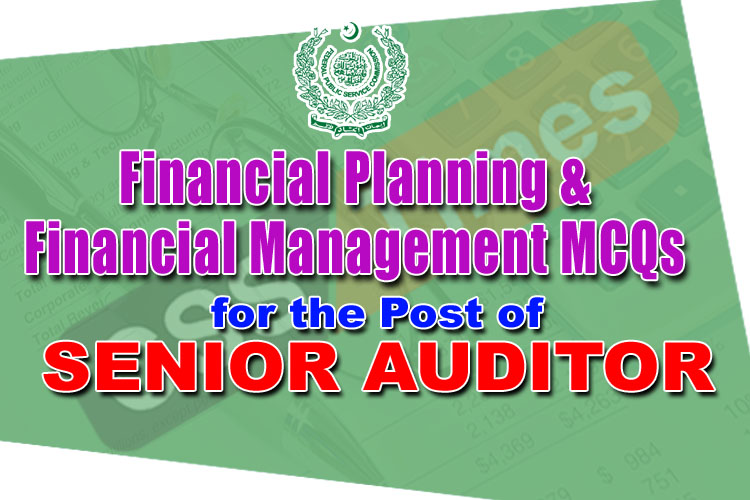
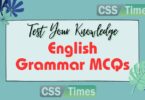
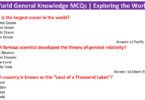
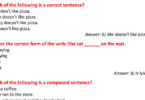
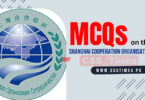
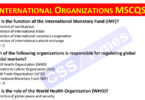
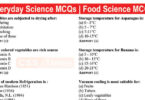
[…] Check Also: Financial Planning & Financial Management MCQs | for FPSC Senior Auditor Posts […]